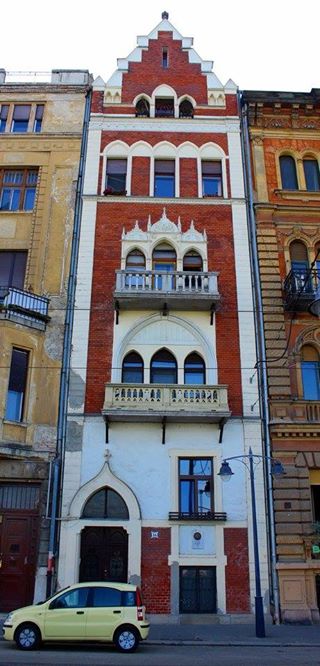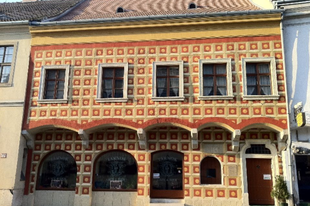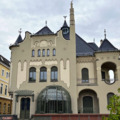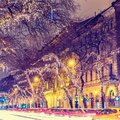You could easily spend an entire week at the Buda Castle just visiting the monuments. I will now introduce seven of my favorites, and I would love to hear your suggestions as well!
1. Medieval Dwelling House – 14 Tárnok Street
A medieval storied building, which stands out from the other buildings on Tárnok utca (Tárnok Street) with its colorful, painted 16th century facade. The street housed a great number of merchants from the beginning, so it is not a coinciwdence that it was referred to as “Merchants’ Street” or “Grocers’ Way” in the charters and the Buda Book of Rights.

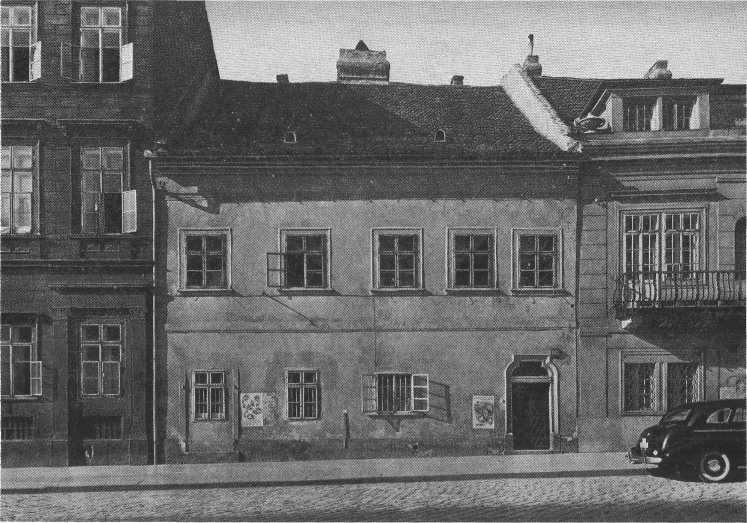 Tárnok street 14.
Tárnok street 14.
The building, or at least the architecture of its facade, was probably build around 1520, which means that it was already there during the Ottoman occupation. What is utterly exciting about the history of the house, is the fact that it bore the house number 114 during the Ottoman domination as a research has revealed. The medieval numbers were painted on the wall in white, with the so-called “al secco” technique.
If you take a closer look at the following gallery, you can see that the late medieval facade featured two serving windows, so the building must have housed two shops in the 15th century.
2. Pharmacy Museum – 18 Tárnok Street
This house, restored from its ruins in the 18th century, also shines in a bright red color with Margit Kovács ceramist’s Madonna statute in the niche of the facade.
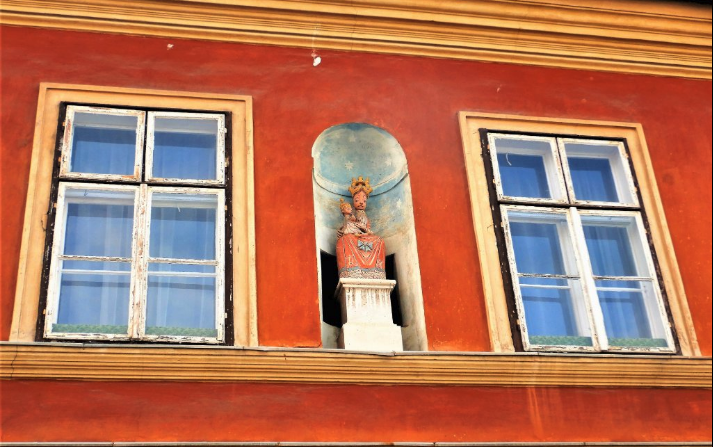
The ground floor was almost certainly used by different shops in the 15th century, then it was rebuilt several times. Its classicistic facade dates back to around 1820. It became the home of the Arany Sas Patika (Golden Eagle Pharmacy), which opened in 1687, after the pharmacy moved from Dísz tér (Dísz Square) to Tárnok utca, although first it was under number 16.
The museum maintained the former pharmacy’s layout: a serving window joined the officina—the place used to serve the customers—with the laboratory part. If possible, we should ask for a tour guide for the short exhibition. Through the settings of the small rooms we can get acquainted with the development of pharmacy from the late 15th century until the 18th century.
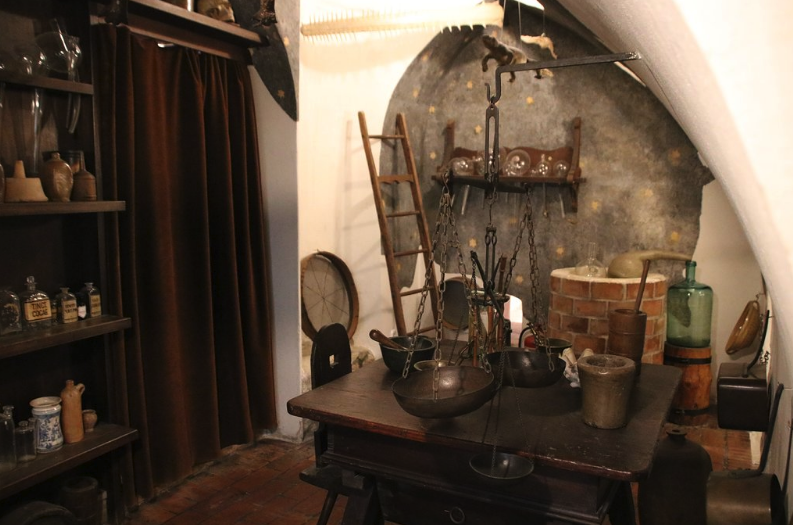
3. Inn to the Red Hedgehog – 3 Hess András Square
It would be difficult to leave the Buda Castle, without walking around the oldest dwelling house to our knowledge, a baroque building now featuring a classicist facade. The building on Hess András tér (Hess András Square) still has its original ground plan: the barrel vaulted gateway still opens to two vaulted rooms on the ground floor.
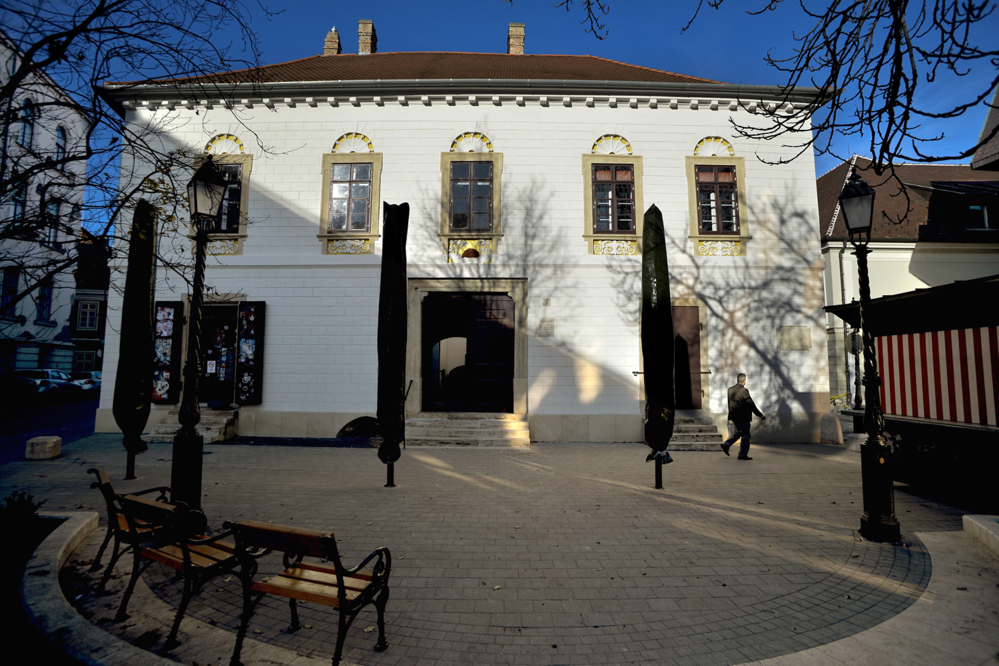 Photo: Zagyi Tibor/Vs.hu
Photo: Zagyi Tibor/Vs.hu
It was at least one-storied originally as well and that is striking because archeologist believe it to be built around the 1260–1270s. Therefore, it is often called the first storied building of Buda.
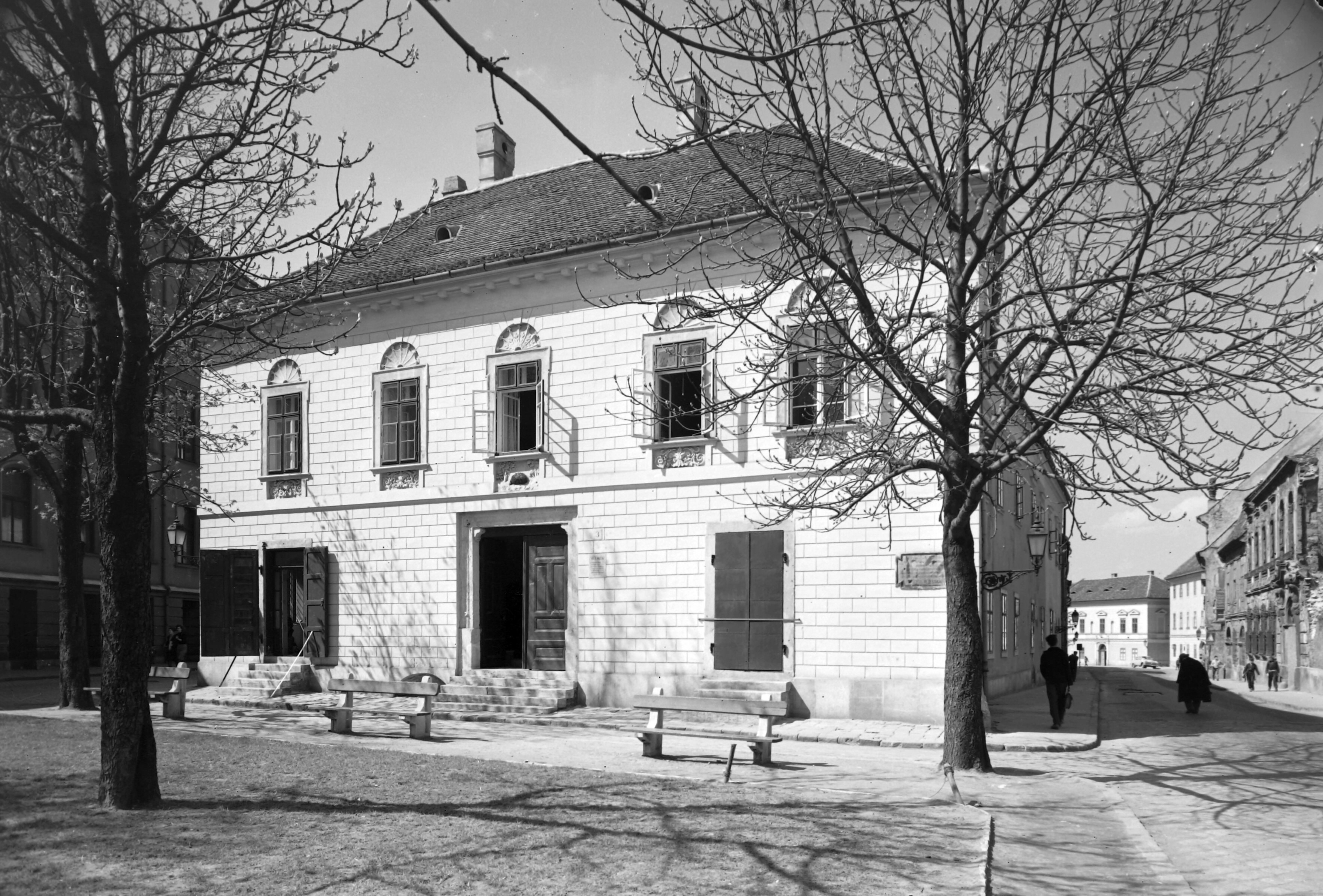
We have no information about the history of its name. However, it is certain that it served as the first inn of the Castle until 1805, and researches suggest that the red hedgehog relief above the gate was placed on the facade in 1820. Yet other sources claim that the hedgehog took its place earlier, at the end of the 17th century. In the 1696 register, it is already mentioned as the Inn to the Red Hedgehog (fogadó a Vörös Sünhöz, zum Rothen Igl).
4. Magdalene Church Tower
When exploring the Buda Castle sooner or later we end up at Kapisztrán tér (Kapisztrán Square), where a large group of sculptures occupies much of the space, including the Magdolna-torony (Magdalene Tower) reaching for the sky. The building was severely damaged during the 1945 siege of Budapest.
After the removal of ruins, the renovations started based on Kálmán Lux’s plans; however, due to the changing political climate, in 1950 parallel to the restoration of the tower the church itself was gradually pulled down.
_templom_tornya_%C3%A9s_falmaradv%C3%A1nyai_(111._sz%C3%A1m%C3%BA_m%C5%B1eml%C3%A9k)_5.jpg)
The Church of Mary Magdalene is one of the oldest institutions at Buda, it was built in the first wave of rebuilding after the Mongol invasion in the 13th century. Although barely any documents survived about the construction works, researchers (Andrea Szebeni és András Végh) casted light on an interesting story: when the Ottoman forces occupied Buda in 1541, this remained the only ecclesiastical building, where people could exercise their faith.
However, many believers became reformers by that time, so they had to find a unique solution: the church was divided into two parts by a wall of boards. While two old priests celebrated mass and sang psalms in the shrine, a Lutheran service was held in Hungarian in the nave.
5. Mace Tower of the Castle
If we descend towards the Várkert Bazár (Castle Garden), we can discover the Buzogány torony (Mace Tower), which underwent an interesting transformation throughout the centuries. Until the siege of Budapest in 1944–45, for example, it was wider and bulkier, as you can see on the black and white picture below.

The original, medieval core of the tower was discovered during the renovations after the war. It was restored according to that, reaching the form we can see today.
If you go up through the gates to the garden, you can see the Szabadság-szobor (Liberty Statue) with the Citadella (Citadel), and the statute of Szent Gellért from the breastwork.

6. Ignác Semmelweis’s House of Birth – 1–3 Apród Street
Ignác Semmelweis’s former home is on Apród utca (Apród Street), below the Mace Tower, and it also serves as the Medical History Museum. Ignác Semmelweis was not born there exactly, but under 1–3 Apród Street, and his family moved to 6 Apród Street five years later.
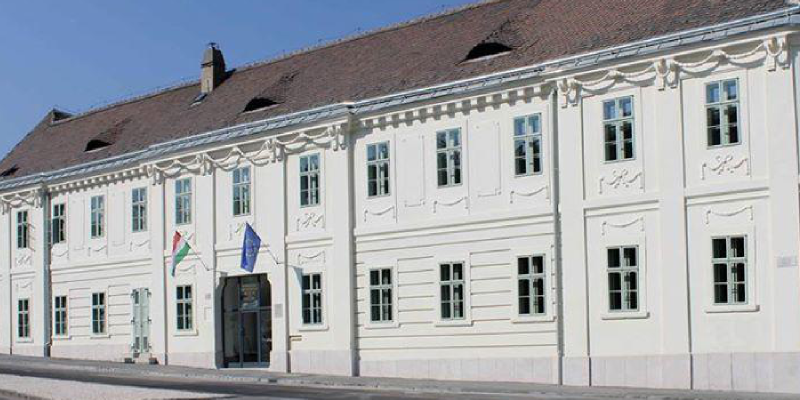
The storied corner house, with its enclosed garden and festoons on its facade, have been completely renovated recently, having its surface changed from orange to white.
The building has housed the Medical History Museum for years. Inside, not only do they collect and explore the relics of the European and Hungarian medical past, but serious attention is paid to collect Semmelweis’s intellectual and material legacy, works about him, as well as scientific and art works appreciating him.
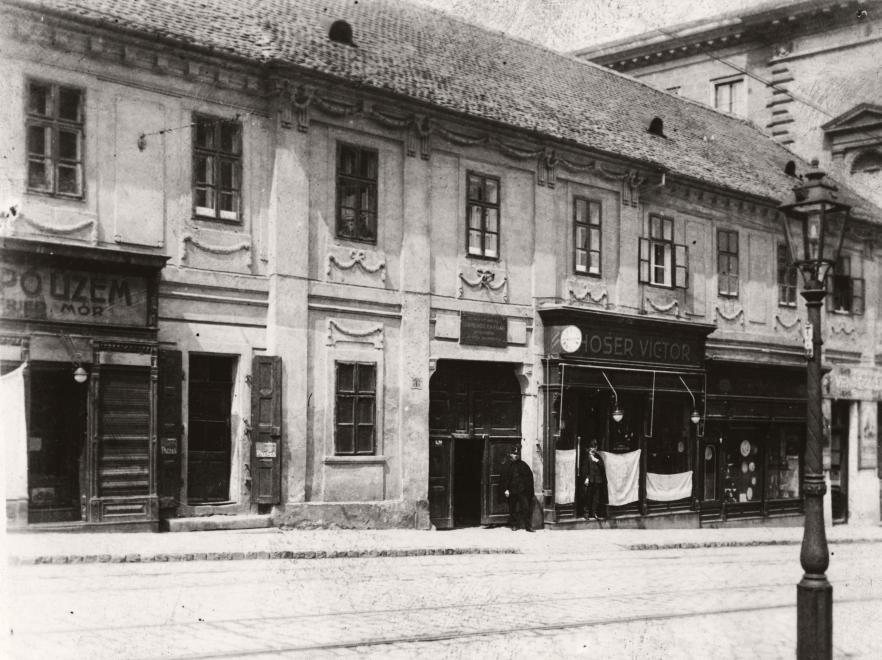
7. The narrowest house of Budapest
It’s only a short walk from Apród Street to one of the narrowest houses of the city. The neo-Gothic dwelling house, finished in 1898, resembles Moorish buildings. The facade of the house at the Döbrentei tér (Döbrentei Square) is 5.5 meters wide facing the Danube and a 6.2 meters on the opposite side.
